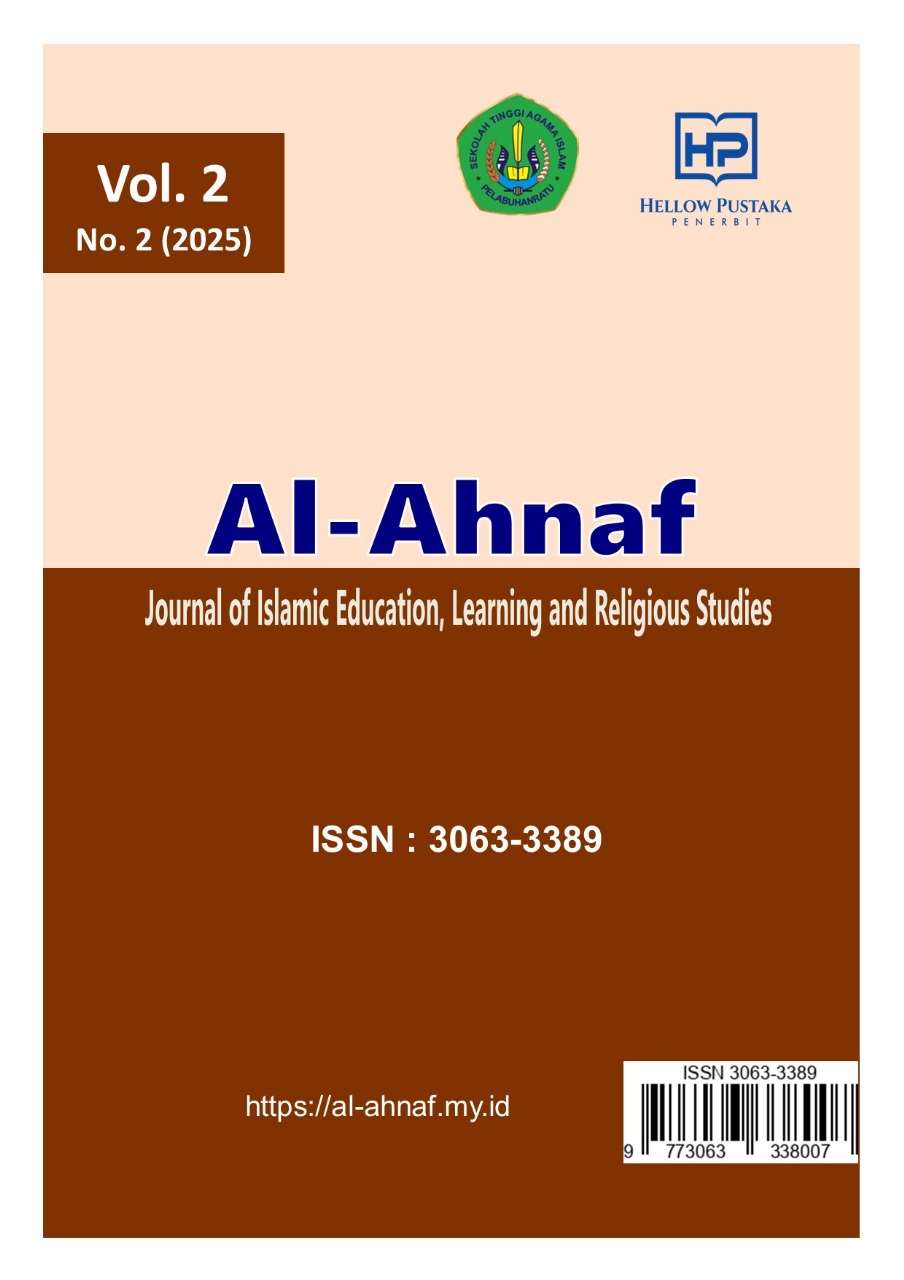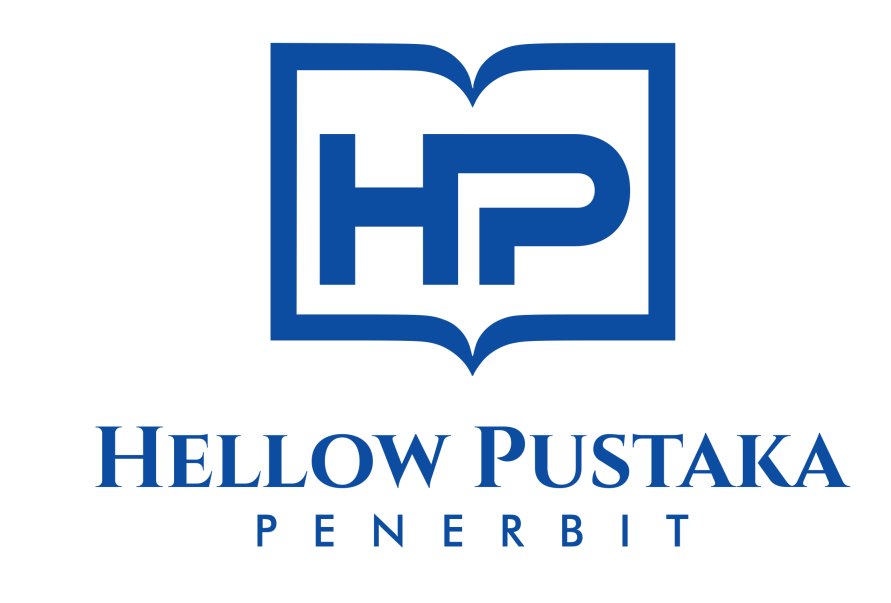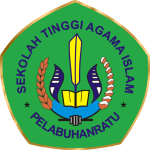Pengaruh Model Problem Based Learning(PBL) Integrasi ChatGPT terhadap Kemampuan Berpikir Kreatif Mahasiswa PAI UIN Mataram
DOI:
https://doi.org/10.61166/ahnaf.v2i2.28Keywords:
Problem Based Learning; ChatGPT; Creative ThinkingAbstract
This study aims to analyze the application of the Problem-Based Learning (PBL) model integrated with ChatGPT media in the teaching of Contemporary Fiqh courses, specifically the material "Pornography and Pornoaction in the Islamic Perspective" for fourth-semester students of the Islamic Education at UIN Mataram. Specifically, this study examines the effect of integrating PBL and ChatGPT on students' creative thinking abilities. The theoretical basis of this study refers to the stages of the PBL model according to Hmelo-Silver, including problem presentation, analysis and identification of learning needs, independent learning, synthesis and solution development, and evaluative reflection. The indicators of creative thinking are based on Guilford's theory, namely fluency, flexibility, originality, and elaboration of thinking. The method used is a quasi-experiment with data collection techniques through tests, questionnaires, interviews, observations, and documentation. Data analysis was conducted quantitatively, including validity and reliability tests of the instruments, normality and homogeneity tests, and hypothesis testing using Mann Whitney and Spearman Rank to see the effect and direction of the relationship between variables. The results of the study showed that the application of the ChatGPT-integrated PBL model improved the quality of Contemporary Fiqh learning. Students became more active, responsive, and adaptive in the learning process. Students' creative thinking skills also experienced a significant increase, especially in terms of fluency, flexibility, uniqueness, and detail in responding to contemporary fiqh issues.
Keywords: Problem Based Learning; ChatGPT; Creative Thinking
References
Ayuningtyas, Paramita Kurnia, and Reni Ambarwati. “Profil Keterampilan Berpikir Kreatif Siswa Biologi SMA Di Surabaya.” In Seminar Nasional Biologi "Inovasi Penelitian Dan Pembelajaran Biologi VIII (IP2B VIII) 2024 Profil, 108, 2024.
Basri, Hasan, Rohmah Indahwati, and Dimas Danar Septiadi. “Dampak Research-Based Learning Berbasis ChatGPT Terhadap Kemampuan Berpikir Kreatif Dalam Menyelesaikan Masalah Mahasiswa.” Bima Journal of Elementary Education 2, no. 1 (2024): 5. https://doi.org/https://doi.org/10.37630/bijee.v3i1.2647.
Ekasriadi, Ida Ayu Agung. “Inovasi Pembelajaran Bahasa : Meningkatkan Keterampilan Berpikir Kritis Melalui Metode CBL Dan PJBL.” PEDALITRA IV : Seminar Nasional Bahasa, Sastra, Dan Pengajarannya 4, no. 1 (2024): 413.
Ersa, Mona Desti, Elvira Destiansari, Syarifah Syarifah, and Tiara Dwi Anjani. “Pengaruh Metode Brainstorming Terhadap Kemampuan Berpikir Kritis Peserta Didik Pada Pembelajaran Materi Sistem Pencernaan Manusia.” Bioilmi: Jurnal Pendidikan 9, no. 1 (2023): 27. https://doi.org/10.19109/bioilmi.v9i1.16780.
Hasanah, Siti Raudhatul, and Abdussakir. “Kemampuan Berpikir Divergen Siswa Dalam Menyelesaikan Soal Open-Ended Barisan Dan Deret Ditinjau Dari Adversity Quotient.” Jurnal Analisa 10, no. 1 (2024): 2–3. https://doi.org/10.15575/ja.v10i1.32597.
Kurniasih, Imas, and Berlin Sani. Panduan Membuat Bahan Ajar Buku Teks Pelajaran Sesuai Dengan Kurikulum 2013. Edited by Adi Jay. 1st ed. Sirabaya: Kata Pena, 2015.
Mahfud. “Berpikir Dalam Belajar: Membentuk Karakter Kreatif Peserta Didik.” Jurnal At Tarbawi Al Haditsah 1, no. 1 (2017): 6.
Mardhiyah, Rifa Hanifa, Sekar Nurul Fajriyah Aldriani, Febyana Chitta, and Muhamad Rizal Zulfikar. “Pentingnya Keterampilan Belajar Di Abad 21 Sebagai Tuntutan Dalam Pengembangan Sumber Daya Manusia.” Lectura: Jurnal Pendidikan 12, no. 1 (2021): 30. https://syekhnurjati.ac.id/jurnal/index.php/tarbawi/article/view/1229/930.
Maulana, Ahmad. AI Dan Pembelajaran Interaktif Di Era Digital. Bandung: Mizan, 2022.
Munandar, Utami. Pengembangan Kreativitas Anak Berbakat. 3rd ed. Jakarta: Rineka Cipta, 2009.
Prambudi, Arya Raj, and Frans Mikael Sinaga. “PENGGUNAAN CHAT GPT SEBAGAI ALAT BANTU DALAM PROSES PEMBELAJARAN DAN IMPLIKASINYA TERHADAP MOTIVASI BELAJAR MAHASISWA.” JICN: Jurnal Intelek Dan Cendikiawan Nusantara 1, no. 6 (2025): 9857. https://jicnusantara.com/index.php/jicn/article/download/1788/1932/9216.
Pratiwi, Indira, and Mawardi. “Penerapan Model Problem Based Learning Berbantuan Audio Visual Untuk Meningkatkan Kemampuan Berpikir Kritis Dan Hasil Belajar Siswa.” Journal of Education Action Research 6, no. 3 (2022): 302–8. https://doi.org/https://doi.org/10.23887/jear.v6i3.49668.
Rahmawati, Ayu, and Rina Suryani. “Penggunaan Model PBL Berbasis Teknologi Digital Untuk Meningkatkan Kemampuan Berpikir Kritis Mahasiswa.” Jurnal Inovasi Pendidikan 7, no. 2 (2022): 111. https://doi.org/10.1234/jip.v7i2.789.
Sahada, Nur Anna, and Eka Asih Febriani. “Pengaruh Model Pembelajaran Problem Based Learning Terhadap Kemampuan Berpikir Kreatif Siswa Kelas X SMA 5 Palu.” Naradidik: Journal of Education & Pedagogy 4, no. 1 (2025): 58–59. https://doi.org/https://doi.org/10.24036/nara.v4i1.270.
Sinaga, Ali Imran. Fikih Kontemporer (Konseptual Dan Istinbath). CV. Pusdikra Mitra Jaya. 1st ed. Medan: CV. Pusdikra Mitra Jaya, 2020. http://repository.uinsu.ac.id/10649/1/Buku Fiqih Kontemporer.pdf.
Supardi. “Peran Berpikir Kreatif Dalam Proses Pembelajaran Matematika.” Jurnal Formatif 2, no. 3 (2020): 248–62. http://journal.lppmunindra.ac.id/index.php/Formatif/article/viewFile/107/103.







